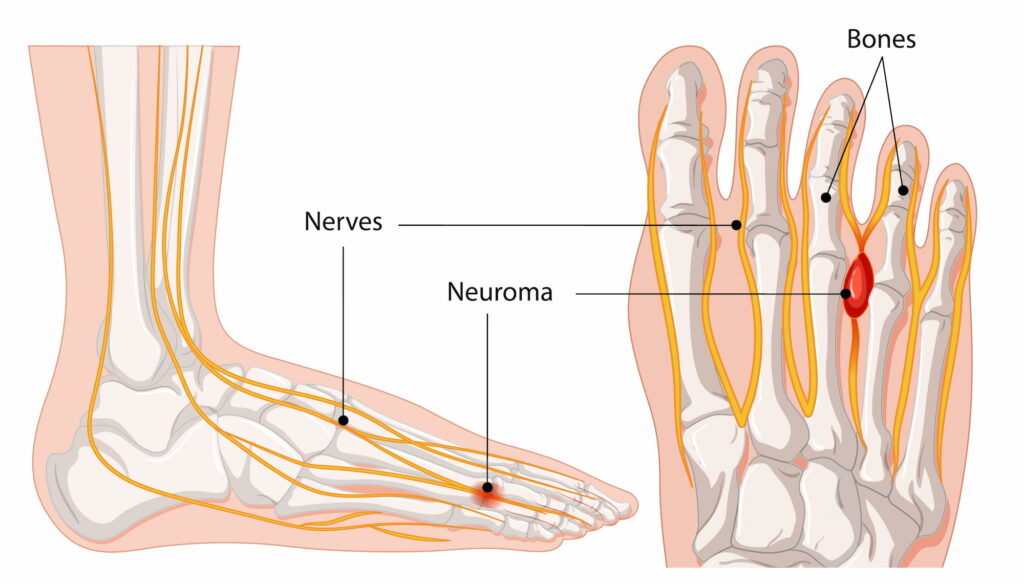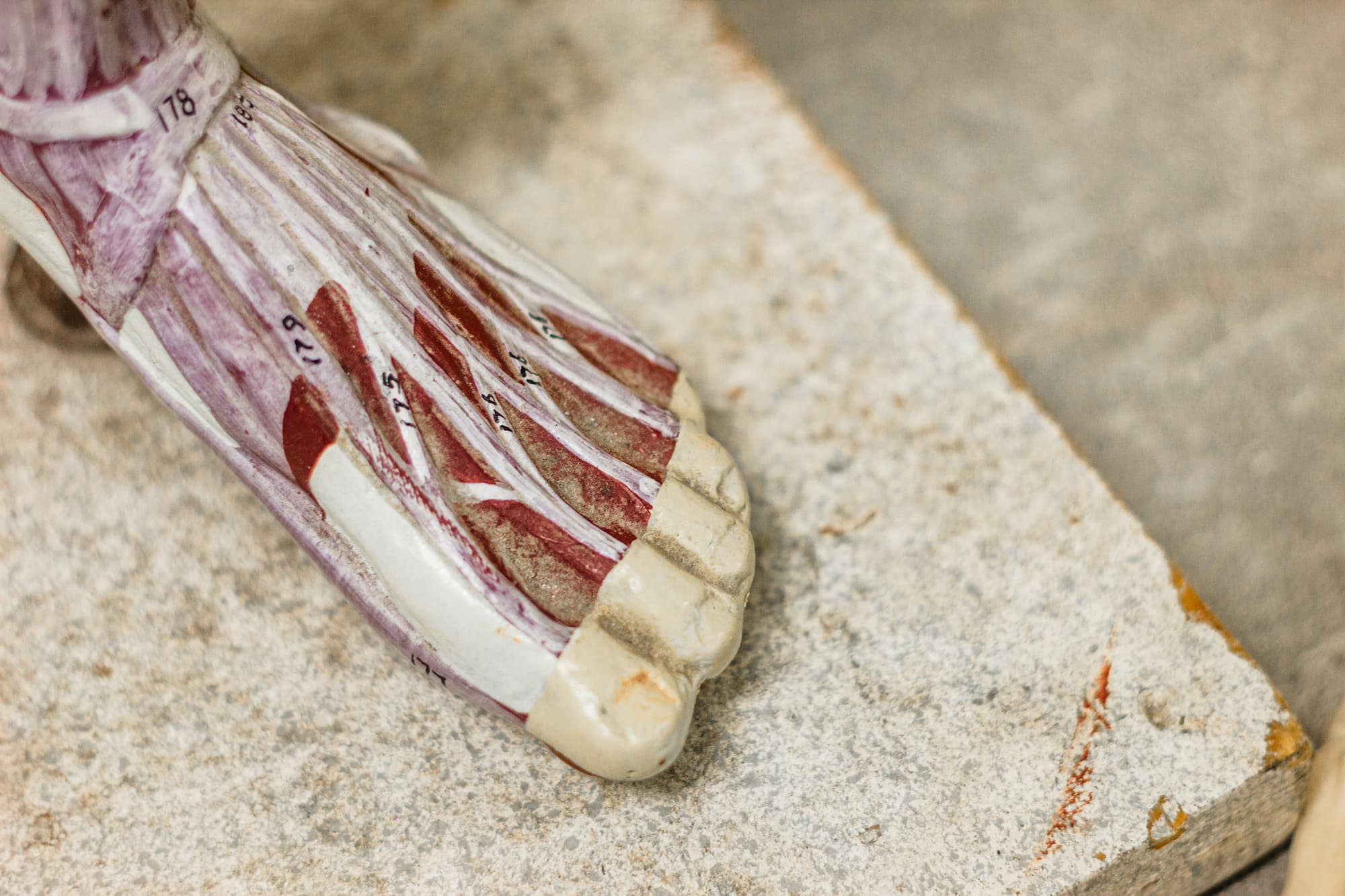What is a Morton’s Neuroma?
Morton’s Neuroma, or intermetatarsal neuroma, is a painful condition affecting the nerves between the metatarsal bones in the ball of the foot. It often causes chronic pain and discomfort and, if left untreated, may result in permanent nerve damage. Morton’s Neuroma can also occur in other areas of the foot, but it is most commonly found between these toes.
What causes Morton’s Neuroma?
- Shoes with narrow toe sections or high heels can force the toes into a cramped position, increasing pressure on the nerves.
- Individuals with bunions, hammertoes, flat feet, or highly flexible feet have a higher risk of developing Morton’s Neuroma.
- Sports that place repeated pressure on the ball of the foot, like running or court sports, can contribute to nerve irritation.
- Trauma or other injuries affecting the ball of the foot may lead to nerve thickening and neuroma formation.

What symptoms would I notice?
Symptoms may start gradually and occur only when wearing tight shoes or performing certain activities. Initially, symptoms may ease by removing the shoe, massaging the foot, or avoiding aggravating activities, but over time, they can become more persistent and intense:
- Tingling, burning, or numbness in the affected toes
- Pain in the ball of the foot during walking or standing
- Feeling of a foreign object inside the shoe, like a pebble or bunched-up sock
How is Morton’s Neuroma diagnosed?
Your GP will discuss your symptoms and provide an initial evaluation. They may apply pressure or perform specific maneuvers to reproduce symptoms. X-rays may be used to rule out other causes of foot pain. In some cases, additional MRIs or ultrasounds may help visualise the nerve thickening and confirm the diagnosis. They may then refer you to Dr Lambers who will make an assessment.
Treatment options
Treatment for Morton’s Neuroma generally begins with non-operative options, with surgery considered if conservative measures prove ineffective.
Non-operative
- Using pads to support the metatarsal arch can relieve pressure on the nerve, reducing irritation.
- Placing ice on the affected area helps decrease swelling and pain.
- Custom orthotics can provide the necessary support to redistribute pressure away from the neuroma.
- Temporarily avoiding high-impact activities can help reduce nerve irritation.
- Changing to shoes with a wide toe box and avoiding high heels or narrow-toed styles that could aggravate the neuroma.
- Nonsteroidal anti-inflammatory drugs (NSAIDs), like ibuprofen, may be prescribed to manage pain and inflammation.
- Cortisone or other local anaesthetics may be injected to reduce inflammation and alleviate pain.
Operative treatments
If non-operative treatments do not provide adequate relief, surgery may be an option. The surgical approach depends on the severity of the neuroma and its location, and it may involve removing a portion of the nerve to relieve pressure. Recovery times vary based on the procedure performed, and patients may need to follow post-operative measures to reduce the risk of recurrence.
Read more about what surgery involves and the expected recovery process below:
Morton’s Neuroma surgery with Dr Lambers
Dr Anton Lambers provides expert surgical care for Morton’s Neuroma should your GP determine that your condition requires this level of treatment. With years of experience, Dr Lambers will ensure the right treatment is selected for your needs.

